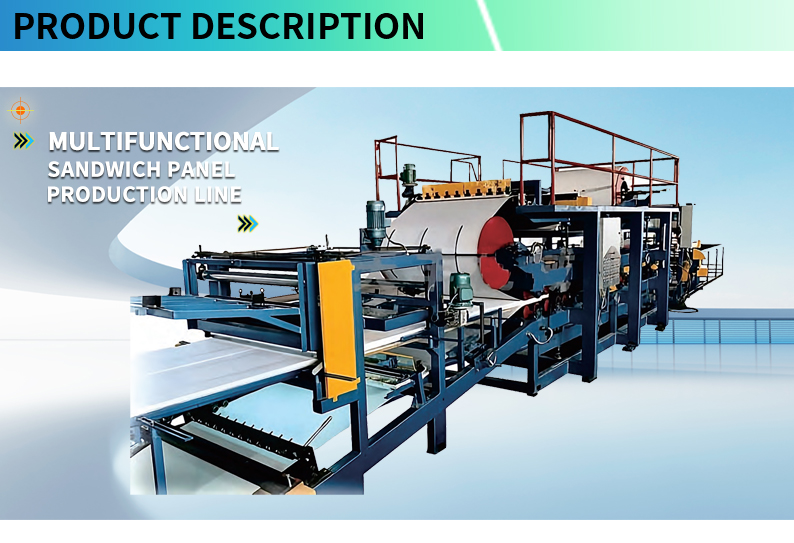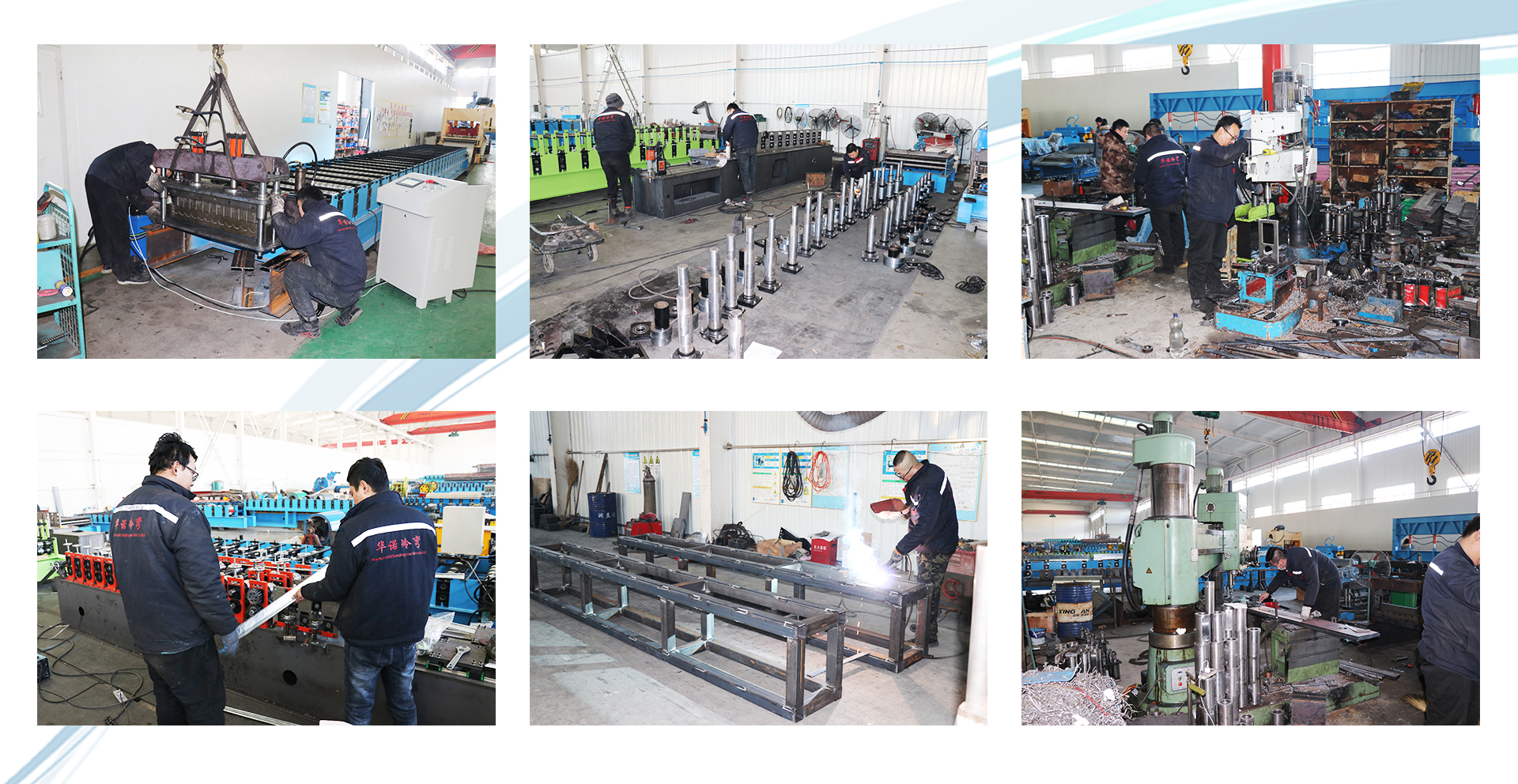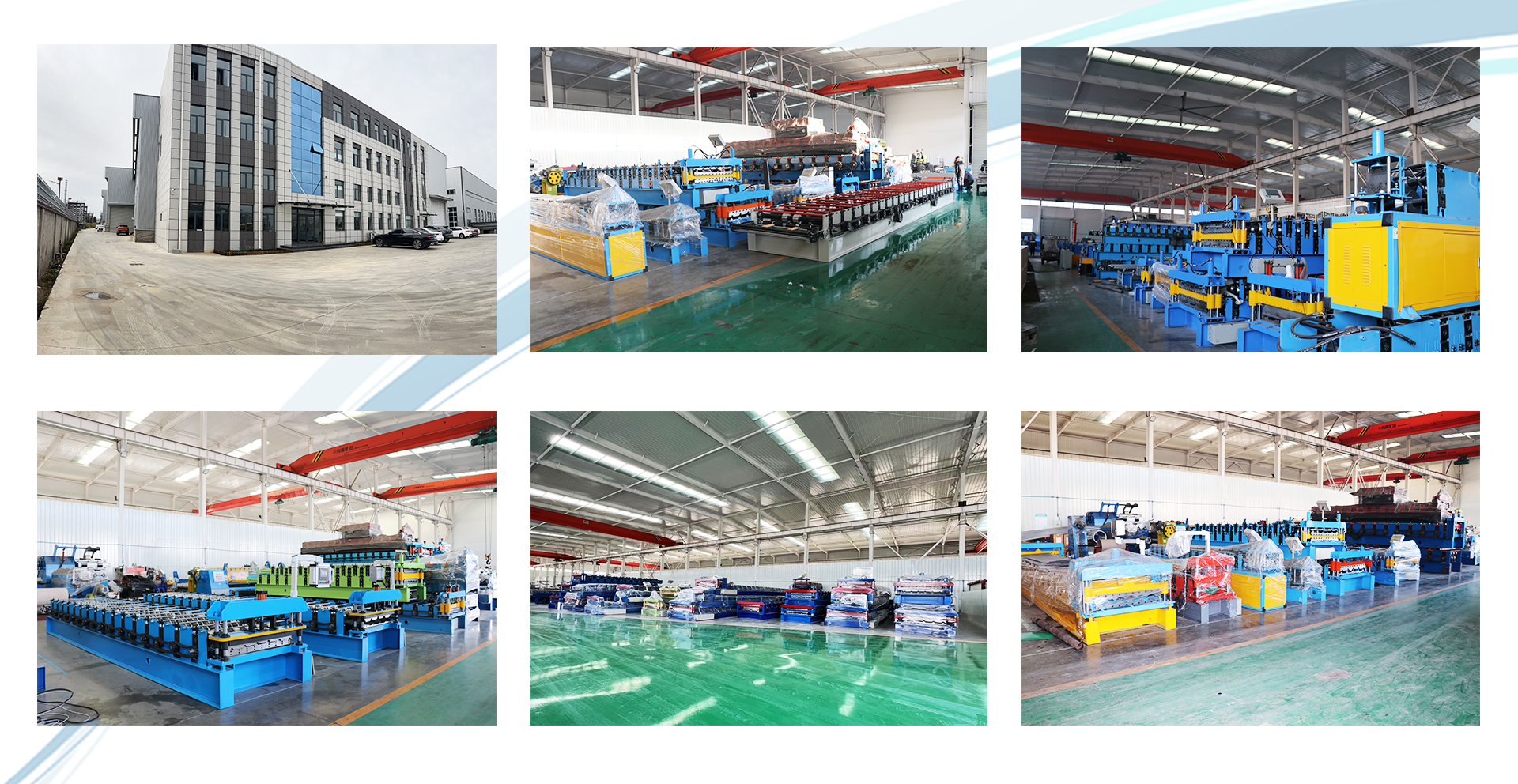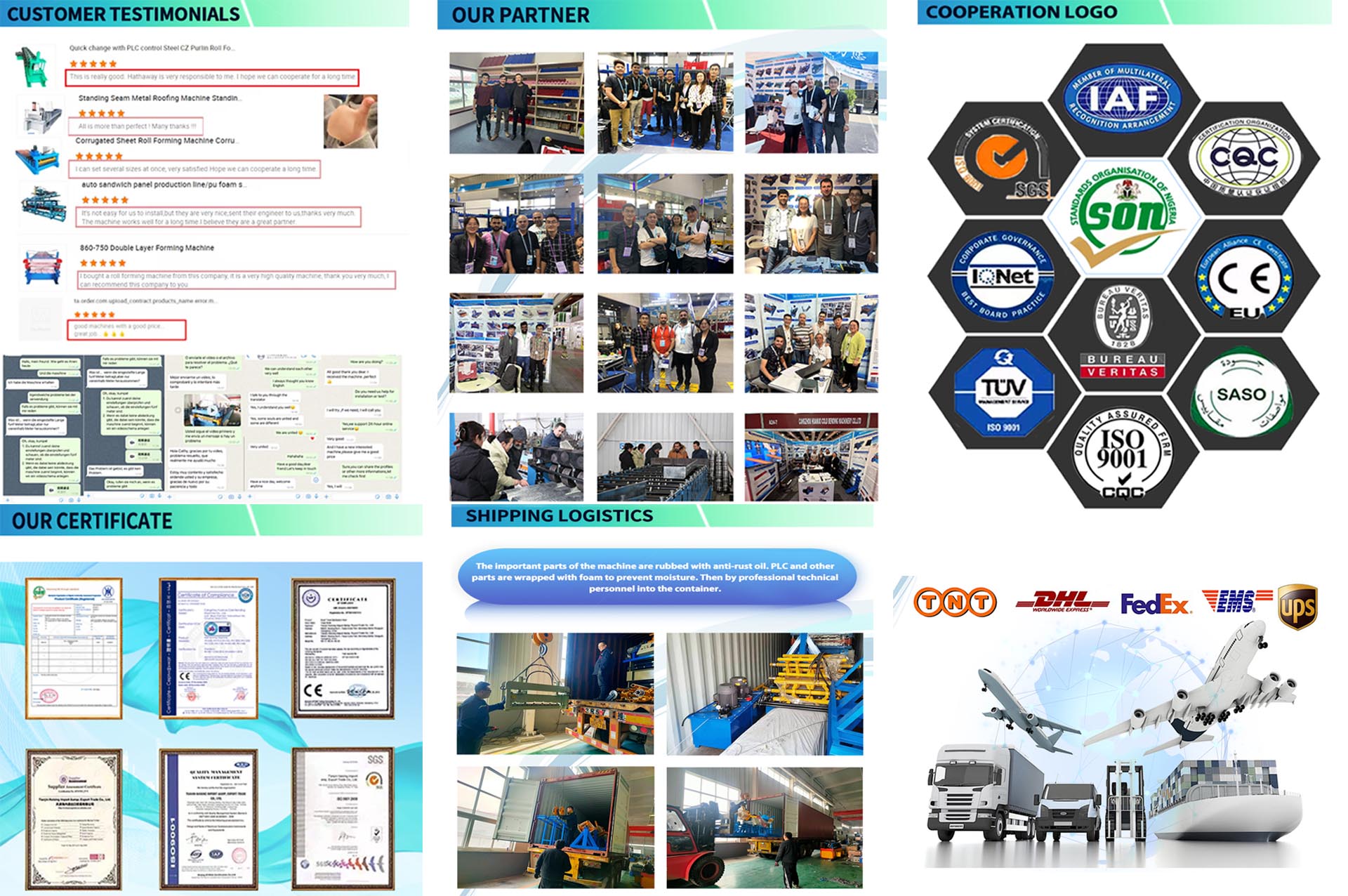In the modern construction industry, the demand for high - performance, energy - efficient, and cost - effective building materials is ever - increasing. Sandwich panel production line machines have emerged as a key solution to meet these demands. These machines are designed to manufacture sandwich panels, which consist of two outer layers (usually made of metal, such as steel or aluminum) and a core layer (commonly foam, rock wool, or glass wool). The unique structure of sandwich panels provide

The production process begins with the uncoiling of the outer layer materials, typically metal coils. The uncoiler is a crucial component that holds the coil and feeds the metal strip at a controlled speed into the subsequent stages of the production line. It is equipped with features such as adjustable tension control to ensure a smooth and consistent feed. For example, in a high - volume production line, an automatic uncoiler can quickly change coils, minimizing downtime. Some advanced uncoilers are also capable of handling different coil sizes and weights, providing flexibility in production.
Core Material Preparation System
The core material, which can be polyurethane foam, expanded polystyrene (EPS), rock wool, or glass wool, needs to be prepared before being integrated with the outer layers. For foam - based cores like polyurethane, a foaming machine is used. This machine mixes the necessary chemicals to create the foam, which is then poured or injected into the sandwich panel structure. In the case of rock wool or glass wool cores, they are usually cut to the required size and thickness in a pre - cutting stage. Specialized cutting machines with sharp blades and precise control systems are employed to ensure accurate dimensions of the core material.
To bond the outer layers with the core material, an adhesive is applied. The adhesive application system typically consists of a glue dispenser or spraying mechanism. For polyurethane - based adhesives, a two - component mixing and dispensing system is often used. The two components are mixed in the correct ratio just before application to ensure proper curing and adhesion. The adhesive is evenly spread over the surface of the core material or the inner side of the outer layers, depending on the production line design. Some production lines use advanced spraying techniques that can adjust the amount of adhesive applied based on the thickness and type of the materials being bonded.
The roll - forming section is responsible for shaping the metal outer layers into the desired profile. A series of rollers, carefully designed and arranged, gradually bend the flat metal strip into the required shape, such as a flat panel or a corrugated panel for added strength. After roll - forming, the laminated system comes into play. This is where the core material, with the adhesive applied, is sandwiched between the two outer layers. The laminated system uses pressure and sometimes heat (in the case of certain adhesives or materials) to ensure a strong bond between the layers. Double - belt laminators are commonly used, where the sandwich panel is passed between two moving belts that apply uniform pressure along the length of the panel, resulting in a flat and well - bonded product.
Once the sandwich panel is laminated, it needs to be cut to the desired length and trimmed to remove any excess material. The cutting system can be either a mechanical shear or a high - precision saw. Mechanical shears use sharp blades to cut through the panel, while saws, such as circular saws or band saws, are often used for more precise cuts, especially when dealing with thicker panels or materials that require a clean edge. Some production lines are equipped with computer - controlled cutting systems that can accurately cut the panels to specific lengths, reducing waste and ensuring consistent product dimensions. After cutting, a trimming process may be carried out to remove any rough edges or protruding materials, giving the panel a finished look.
The final stage of the production line involves stacking the cut sandwich panels and preparing them for packaging. Automated stacking systems are used to neatly stack the panels in a specific pattern, making it easier for handling and transportation. These systems can be programmed to stack panels of different sizes and weights. After stacking, the panels may be wrapped in protective materials, such as plastic sheets or cardboard, to prevent damage during storage and transportation. Some production lines also have labeling systems that attach product information labels to each panel, including details such as panel size, material composition, and manufacturing date.
Material Preparation: As mentioned earlier, the metal coils for the outer layers are loaded onto the uncoiler, and the core material is prepared. For foam - based cores, the foaming machine mixes the chemicals, and for fibrous cores like rock wool, they are cut to size.
Outer Layer Processing: The metal strip from the uncoiler passes through the roll - forming section, where it is shaped into the desired profile. At the same time, the adhesive is applied to the inner side of the metal strip or the surface of the core material.
Lamination: The prepared core material is then placed between the two outer metal layers, and the sandwich is passed through the laminating system. The laminator applies pressure and, if required, heat to bond the layers together.
Cutting and Finishing: After lamination, the continuous panel is cut to the desired length in the cutting section. Any excess material is trimmed, and the panel is inspected for quality.
Stacking and Packaging: The cut and trimmed panels are stacked neatly by the stacking system and then packaged for storage or transportation.
In residential construction, sandwich panels are used for walls, roofs, and sometimes even floors. Their excellent thermal insulation properties help in reducing energy consumption for heating and cooling, making homes more energy - efficient. For example, in a cold climate region, a house with sandwich panel walls and roof will require less heating during winter as the panels effectively retain the indoor heat. The lightweight nature of sandwich panels also makes them easier to handle during construction, reducing labor costs. Additionally, the variety of colors and finishes available for the outer metal layers allows for aesthetically pleasing designs that can match different architectural styles.
Commercial and industrial buildings, such as factories, warehouses, and office buildings, often have large - scale roofing and wall - cladding requirements. Sandwich panels are an ideal choice as they can cover large areas efficiently. In industrial settings, where durability and fire - resistance may be crucial, sandwich panels with fire - resistant core materials like rock wool can be used. For example, in a manufacturing plant where there is a risk of fire, fire - resistant sandwich panels can help contain the spread of flames and protect the structure and equipment. In commercial buildings, the smooth and clean appearance of sandwich panels gives a modern and professional look.
Cold storage and refrigeration facilities require building materials with high - performance thermal insulation to maintain low temperatures. Sandwich panels produced by specialized production lines are perfect for these applications. The polyurethane or EPS core materials in these panels provide excellent insulation, minimizing heat transfer from the outside environment. This helps in reducing the energy consumption of refrigeration systems, which is a significant cost factor in cold storage operations. The panels are also designed to withstand the cold and humid conditions inside these facilities, ensuring long - term durability.
Temporary and modular buildings, such as construction site offices, classrooms, and emergency shelters, often need to be erected quickly and cost - effectively. Sandwich panels are well - suited for these applications as they can be easily assembled on - site. The lightweight panels can be transported to the location and quickly put together, reducing the construction time significantly. Their modular nature also allows for easy expansion or modification of the building as needed. For example, in a construction project, a temporary office made of sandwich panels can be set up in a short time to provide a comfortable working environment for the project team.
to poor - quality products or damage to the machine. For example, if a machine designed for steel outer layers is used with aluminum, the roll - forming process may not work correctly, resulting in panels with inconsistent shapes. Manufacturers need to carefully select a production line machine that is compatible with the materials they plan to use based on their target market and product range.




